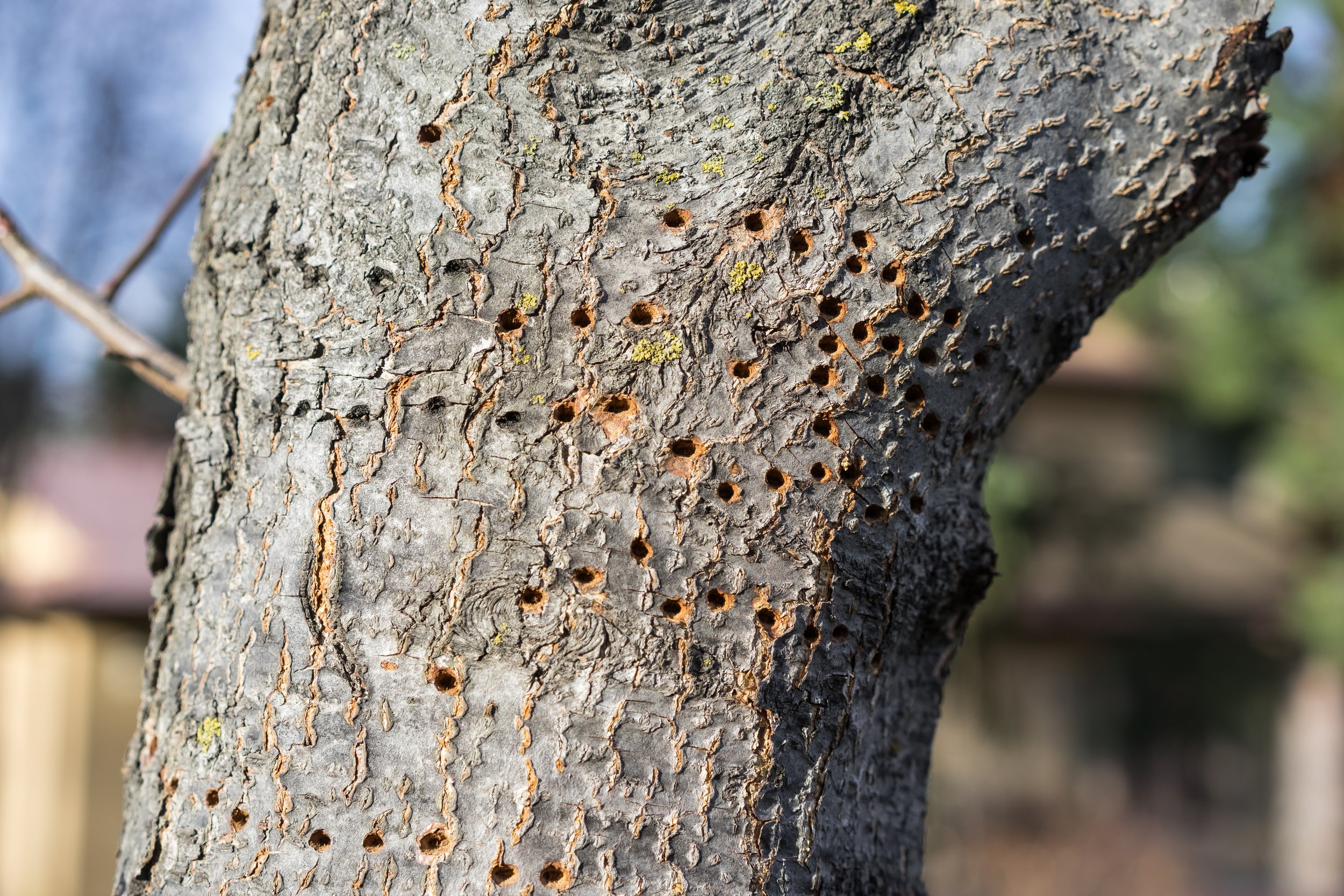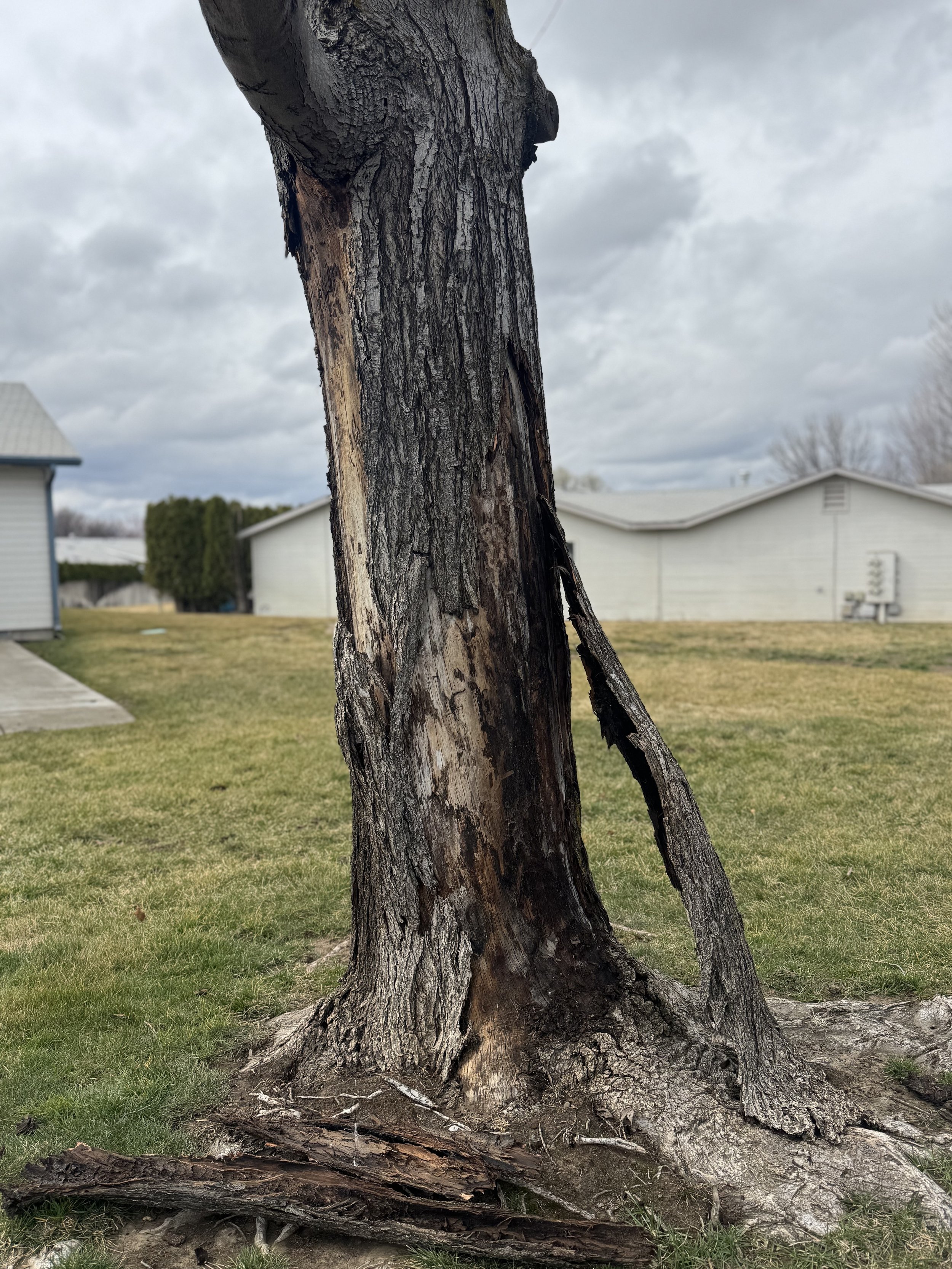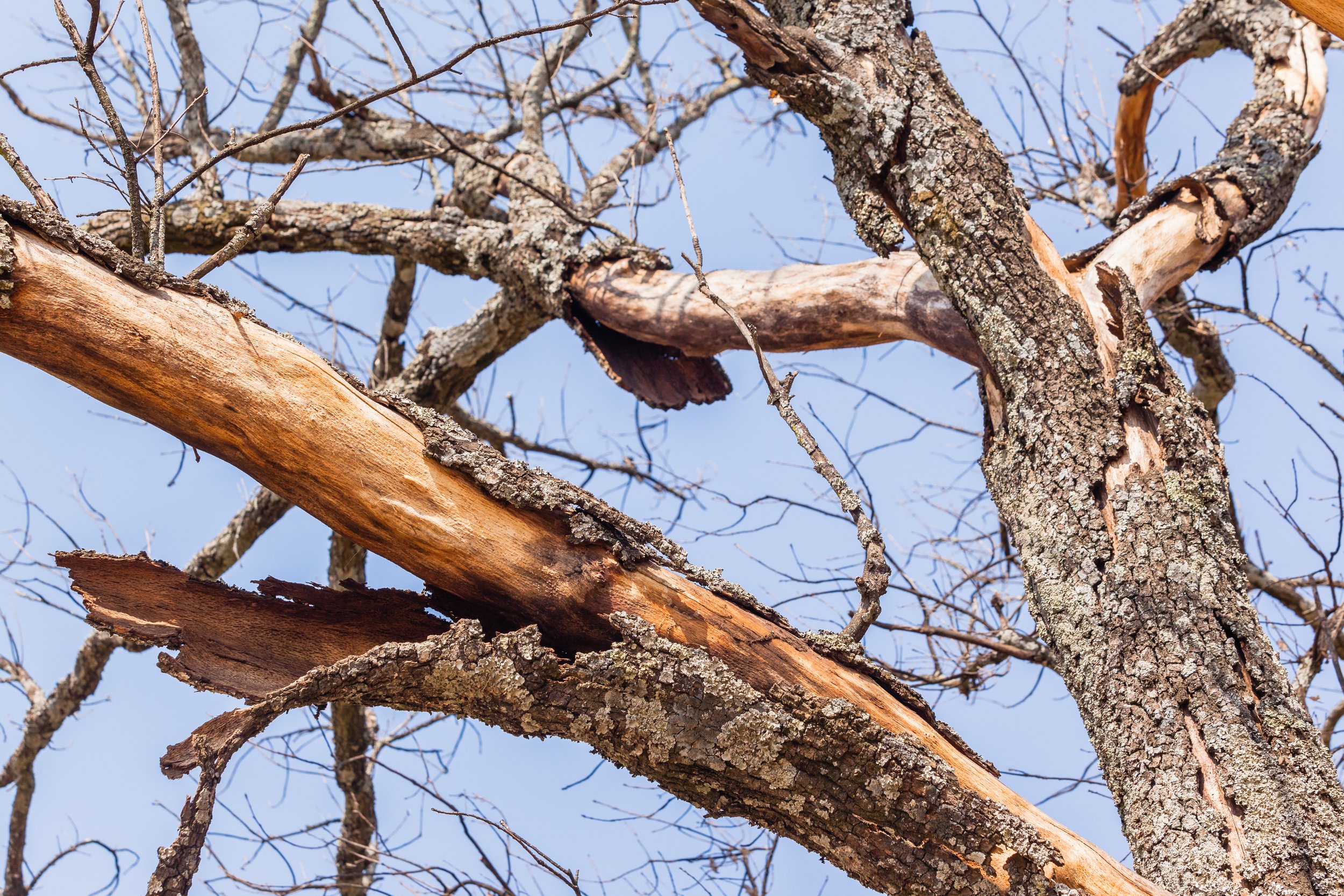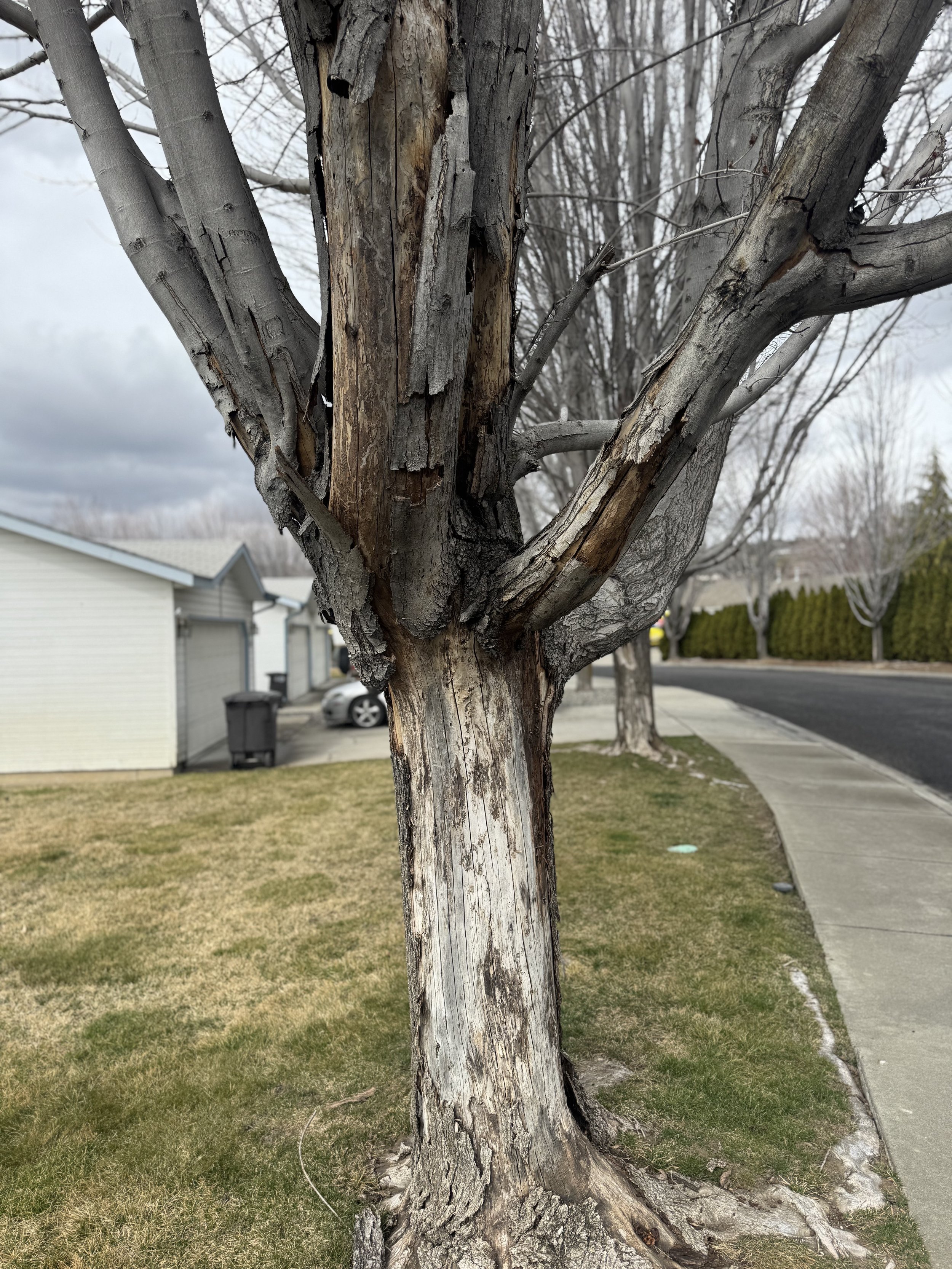13 Signs of Insect Infestation in Your Yakima County Trees
Trees play a vital role in Yakima County’s landscapes, providing shade, improving air quality, and enhancing property value. However, insect infestations can severely impact their health, leading to weakened structures, stunted growth, and even death. Early detection is key to preventing irreversible damage. In this guide, we will explore 13 signs that your trees may be suffering from an insect infestation and how Big R Tree Service can help you combat these threats to keep your trees thriving.
Trees Most Vulnerable to Insect Infestation in Yakima County
Certain trees are more susceptible to insect infestations due to their natural characteristics, environmental stress, or previous damage. Some of the most vulnerable trees in Yakima County include:
● Ash Trees – Highly susceptible to the Emerald Ash Borer, which can kill a tree within a few years.
● Birch Trees – Targets of the Bronze Birch Borer, especially when stressed by drought or poor soil conditions.
● Pine Trees – Frequently attacked by the Nantucket Pine Tip Moth and bark beetles, leading to stunted growth and dieback.
● Oak Trees – Affected by Gypsy Moth larvae, which can cause severe defoliation.
● Maple Trees – Often targeted by aphids, scale insects, and the invasive Asian Longhorned Beetle.
If you have any of these trees on your property, the following sections will break down what you should look for in the case of an insect infestation.
Visible Damage to Leaves and Needles
One of the earliest indicators of insect activity is damage to the tree’s foliage. Leaves are essential for photosynthesis, and when they become compromised, the entire tree suffers.
1. Curling, Yellowing, or Wilting Leaves
Have you noticed your leaves looking less vibrant lately, perhaps curling, turning yellow, or even wilting? These are often the first telltale signs of sap-sucking insects like aphids, scale insects, and mealybugs. These tiny invaders use their piercing mouthparts to feed on the sap within your tree’s leaves, depriving them of essential nutrients.
2. Defoliation or Skeletonized Leaves
Imagine walking outside and seeing your once lush, leafy trees reduced to bare branches or leaves that look like lace. This is the devastating effect of defoliating caterpillars like Eastern Tent Caterpillars and Gypsy Moths. These voracious eaters can strip a tree of its foliage in a matter of days, leaving behind only the skeletal remains of leaves – a process known as skeletonization.
How Big R Tree Service Can Help: Our team provides assessments to identify what may be the cause of any defoliating or cosmetic effects. Pay attention to any changes in your trees’ appearance. If left untreated, infestations can result in larger underlying problems.
Bark and Trunk Damage
Insects that burrow into tree bark cause some of the most severe damage. These pests disrupt the tree’s ability to transport water and nutrients, leading to structural instability.
3. Boring Holes in Bark
Imagine your trees being attacked from the inside out. Wood-boring insects, like bark beetles, the Emerald Ash Borer, the Asian Longhorned Beetle, and the Bronze Birch Borer are masters of stealth, often causing severe damage before you even notice they’re there. One of the most telling signs of their presence is the appearance of small, round exit holes in the bark.
4. Oozing Sap or Gumming
Have you noticed sticky, resinous sap oozing from your tree’s bark? This ‘gumming’ or excessive sap flow is often a distress signal, indicating that your tree is under attack by insects like bark beetles, weevils, or the Nantucket Pine Tip Moth. This is particularly common in pine and birch trees in Yakima County.
5. Cankers and Cracked Bark
Healthy bark acts as a protective shield for your trees. When you notice cankers—dark, sunken patches—or cracked, splitting bark, it’s a clear indication that something is weakening the tree from within.
How Big R Tree Service Can Help: We conduct expert tree assessments and apply treatments to promote healing and nurture your trees back to optimal health.
Unusual Growth or Decline
Changes in tree growth patterns can also indicate an insect problem.
6. Stunted or Deformed Growth
Are your young trees or ornamental shrubs failing to thrive? Do you notice new growth that looks twisted, stunted, or misshapen? These are often signs of attack from pests like the Nantucket Pine Tip Moth or various weevil species, both of which target the tender new growth of your trees.
7. Dead Branches or Dieback
When you notice branches dying from the top down, a condition known as dieback, it’s a serious red flag. This often indicates a severe infestation by wood-boring pests like bark beetles, the Bronze Birch Borer, or the Emerald Ash Borer. Dieback is a sign that the tree’s vital systems are compromised, and without intervention, the entire tree is at risk.
How Big R Tree Service Can Help: Our expert pruning and treatment services remove affected areas and strengthen trees against further damage.
Pest Presence and Byproducts
Insects leave behind visible signs, such as residue, webbing, or larvae.
8. Sticky Residue or Sooty Mold
Have you noticed a sticky, shiny substance coating the leaves and branches of your trees, followed by a black, powdery residue? This is a telltale sign of sap-sucking insects like aphids or scale insects. These pests excrete a sugary substance known as honeydew, which creates the perfect breeding ground for sooty mold.
9. Silken Webbing or Nests
Have you spotted large, conspicuous, silken webs or nests clinging to the branches of your trees? These are telltale signs of caterpillar infestations, specifically Eastern Tent Caterpillars or Gypsy Moths. These caterpillars spin these protective shelters where they gather to feed on leaves in large groups.
10. Egg Masses or Larvae on Bark and Leaves
Finding clusters of eggs or tiny larvae clinging to the bark and leaves of your trees is like catching an infestation in its infancy. Recognizing these early warning signs, particularly those of Gypsy Moths Eastern Tent Caterpillars, is crucial for preventing widespread damage.
11. Insects Swarming Around the Tree
Seeing a large number of adult insects congregating or swarming around a tree is a highly visible and alarming sign of a potential infestation. This behavior often indicates that the tree is under attack.
12. Exit Holes or Frass Near the Base
When you spot small exit holes in the bark near the base of your tree or find a sawdust-like substance called frass scattered around the base, it’s a clear sign that wood-boring insects are at work.
13. Unusual Leaf or Branch Dropping
Is your tree shedding leaves or branches out of season or experiencing an unusually heavy drop? This premature leaf or branch drop can signal that insects like weevils, scale insects, or mealybugs are disrupting the tree’s ability to retain its foliage and branches.
Protecting Your Trees from Insect Infestations
Catching an insect infestation is crucial for saving your trees and preventing widespread damage. If you notice any of these signs, it’s important to take action quickly. In addition to treating infestations, Big R Tree Service provides seasonal maintenance programs to keep trees healthy and safe. Our experts offer complete tree care to ensure optimal tree health year-round. Preventative care is just as important as reactive treatments regarding long- term tree management.
Seasonal Tree Care and Long-Term Protection
To maintain healthy trees in Yakima County, consider a year-round approach to tree care. Spring is the best time for pest inspections and early interventions. Summer maintenance includes monitoring for stress and providing supplemental watering. Fall is ideal for deep-root fertilization, while winter pruning helps eliminate weak branches before storms.
Contact Us:
Our team of experienced arborists offers comprehensive tree health assessments, pest treatments, and ongoing maintenance to protect your trees from harmful insects. Contact us today for an inspection and keep your landscape healthy for years.
By staying vigilant and investing in complete tree care, you can safeguard Yakima County’s trees from destructive insect infestations. Don’t wait until it’s too late. Reach out to Big R Tree Service and let us help you maintain the beauty and health of your trees.







